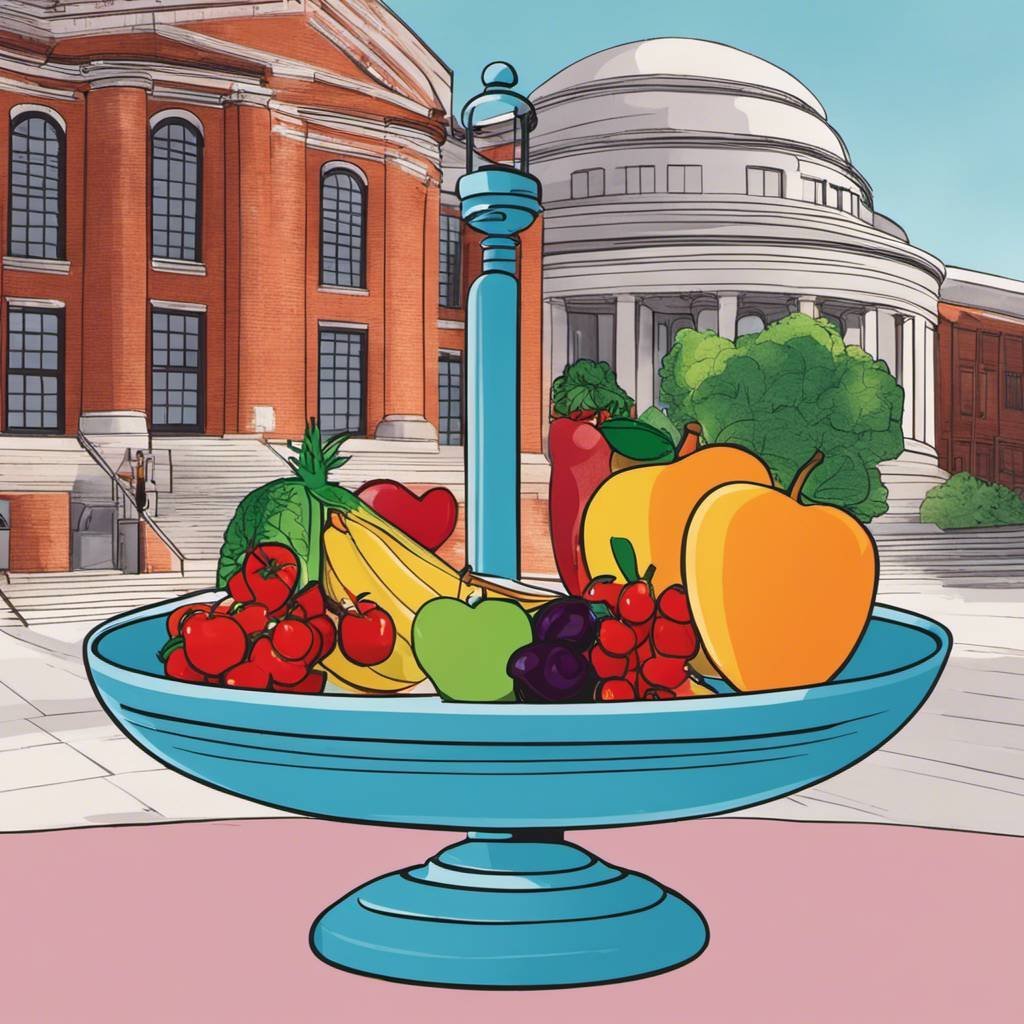The rainbow diet is not merely about a vibrant plate of food; it’s a comprehensive approach to nutrition that underscores the variety of nature’s bounties. This diet, grounded in the belief that foods of different colors provide unique and vital nutrients, advocates for a diverse food intake for optimal health. From the radiant reds of strawberries to the deep purples of blackberries, each color carries its nutritional value. In this article, we will delve into the principles of the rainbow diet, its numerous benefits, and how to incorporate it into your daily meals for a balanced and dynamic lifestyle.
The rainbow diet is inspired by nature’s dazzling array of colors. This dietary strategy emphasizes the consumption of a variety of fruits and vegetables based on their color. Each color group offers a unique set of vitamins, minerals, and antioxidants, suggesting that a colorful plate can lead to a well-rounded nutrient intake.
Much like the diverse colors of a rainbow, this diet encourages eating from every color category. Every color signifies specific nutrients. For example, orange foods like pumpkins are rich in beta-carotene, a precursor of vitamin A. A plate full of different colors is not only nutritionally beneficial but also visually appealing, making mealtime more enjoyable. The rainbow diet is not about rigid calorie counting or eliminating food groups. Instead, it fosters a positive relationship with food, where choices are made based on colors and the associated nutrients.
• Diversity: Ensure consumption from each color group to maximize nutrient intake.
• Whole foods: Prioritize whole, unprocessed foods over their processed counterparts.
• Mindfulness: Be conscious of what colors you’re eating and aim to diversify over the course of a week.
This approach can be a refreshing departure from other diets focusing primarily on weight loss or restrictions. The emphasis on varied intake ensures nutritional adequacy and encourages the exploration of new flavors and cuisines. Adopting the rainbow diet can be as simple as adding more colors to your plate, be it through fresh salads, stir-fries, or smoothies.
The rainbow diet, with its emphasis on consuming a variety of colorful fruits and vegetables, offers several compelling benefits. Every color in the rainbow diet signifies specific nutrients. For example, kale and broccoli are rich in vitamins A, C, and K, iron, and calcium. Ensuring various colors in your diet provides a wide range of essential nutrients. This helps in promoting overall health and reducing the risk of nutrient deficiencies.
Blue and purple foods, such as blackberries and plums, contain anthocyanins, which support heart health and cognitive functions. Consuming a mix of colorful fruits and vegetables provides various types of dietary fiber, crucial for digestive health. Foods like sweet potatoes and oranges offer both soluble and insoluble fibers, aiding in regular bowel movements and supporting a healthy gut microbiome.
Foods in the rainbow diet can influence mood and cognitive function. Omega-3 fatty acids, found in green leafy vegetables, play a role in reducing the risk of depression and promoting brain health. A diet rich in fruits and vegetables tends to be lower in calories and higher in volume, helping you feel full with fewer calories. It also promotes slower, steadier digestion, which can aid in managing hunger and supporting metabolic health.
The array of vitamins, minerals, and phytochemicals in colorful foods supports the immune system. Citrus fruits, rich in vitamin C, boost the immune system and improve skin health. A consistent intake of various fruits and vegetables has been linked to a reduced risk of chronic diseases, including certain cancers, heart disease, and type 2 diabetes.
For those who prioritize their health and seek a balanced dietary approach, the rainbow diet offers an easy-to-follow, visually appealing, and nutritionally rich option. It’s a celebration of nature’s bounty, ensuring that every meal is not only tasty but also packed with health benefits. Adopting the rainbow diet means infusing your meals with vibrant colors from nature’s bounty.
Examples: Cauliflower, mushrooms, garlic, onions, whole grains like quinoa and brown rice. Including these foods in your diet can ensure you’re receiving a wide variety of essential nutrients. For a balanced intake, aim to fill your plate with multiple colors at each meal. This not only makes the dining experience visually appealing but also nutritionally comprehensive.
Switching up your food choices within each color category from week to week can help you enjoy different flavors and textures, keeping mealtime exciting. The rainbow diet is all about celebrating diversity in nutrition, so don’t hesitate to explore new and colorful foods!
Embracing the rainbow diet doesn’t require a complete overhaul of your eating habits overnight. Instead, with a few smart strategies, you can gradually introduce colorful foods into your meals. Here are some practical tips to make the shift easier and enjoyable:
Draft a weekly meal plan that includes foods from each color category. This helps ensure a balanced intake of nutrients over the week. Seasonal fruits and vegetables are not only fresher but also tend to be more flavorful and nutrient-dense. Plus, they can be cost-effective. Experimenting with new recipes keeps mealtime exciting. If you’ve never tried beetroot soup or roasted Brussels sprouts, now might be the time!
Smoothies offer an easy way to combine various colored fruits and vegetables. A green spinach base can be jazzed up with blueberries, strawberries, and a splash of almond milk for a nutrient-packed drink. Keep colorful snacks, like carrot sticks, cherry tomatoes, or mixed nuts, within easy reach. This encourages healthy snacking habits.
Even if you have limited space, consider growing herbs or small vegetables like cherry tomatoes. Home-grown produce can be an enticing way to add more colors to your plate. Sharing meals with friends and family can make the transition to the rainbow diet more enjoyable. Plus, it’s a great way to introduce others to this colorful and nutritious way of eating.
In conclusion, the rainbow diet is a holistic approach to nutrition that encourages a diverse intake of fruits and vegetables. It is not just a diet but a lifestyle change that promotes overall health and wellness. So, why not give it a try and experience the benefits of this colorful way of eating?






